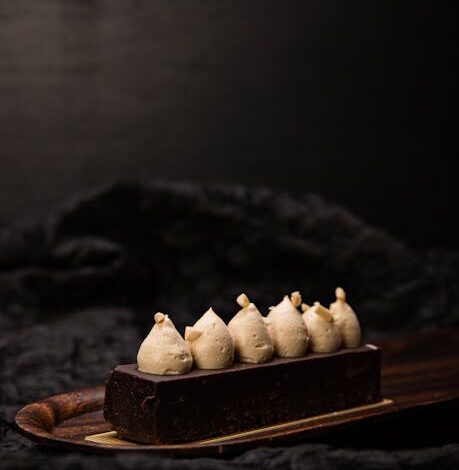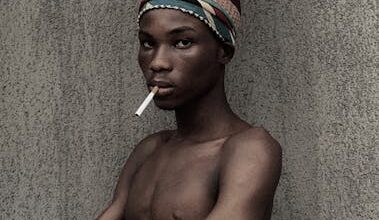Beyond the Fabric: Understanding the Luxury Equation

Let’s be honest. When you first heard about a $230 “sock” for an iPhone, your initial reaction probably involved an eye-roll, a chuckle, or perhaps an incredulous head shake. A simple sleeve, made of what appears to be basic fabric, costing more than many high-end cases? It seems, on the surface, utterly ridiculous. An egregious example of luxury gone wild, or perhaps Apple simply poking fun at its most devout followers.
But what if we paused for a moment, took a deep breath, and looked beyond the sticker shock? What if we considered this isn’t just a “sock,” but something far more nuanced, designed for a specific consumer, and rooted in a particular philosophy? Because in a world where a designer t-shirt can cost hundreds and a limited-edition art toy can fetch thousands, the $230 iPhone “Pocket” – as it’s officially dubbed – starts to make a peculiar kind of sense. It’s not for everyone, and it’s certainly not about utility in the traditional sense. It’s about something else entirely.
Beyond the Fabric: Understanding the Luxury Equation
To truly grasp the rationale behind this premium accessory, we first need to shift our perspective from pure functionality to the realm of luxury goods. This isn’t just about protecting your device from scratches; it’s about making a statement, embracing a lifestyle, and engaging with a brand at its most exclusive level. Think of it less as a practical necessity and more as an extension of a meticulously curated aesthetic.
The Allure of Exclusivity and Brand Heritage
The “iPhone Pocket” comes from the same label responsible for Steve Jobs’ iconic mockneck. This isn’t some random, third-party knock-off; it’s a product intrinsically linked to Apple’s legacy of minimalist design and high-end fashion sensibilities. That connection immediately elevates it beyond a mere piece of fabric. It’s part of a narrative, a continuation of a design language that values clean lines, premium materials, and understated elegance.
In the luxury market, brand heritage and association carry immense weight. People pay significant sums for items that embody a certain story or legacy. This “sock” isn’t just an item; it’s an artifact steeped in the lore of one of the world’s most influential design-led companies. It’s for the enthusiast who appreciates the finer details, the person who understands that sometimes, the true value lies in what an item represents, rather than its raw material cost.
It’s Not a Utility, It’s an Accessory
We often conflate price with utility, especially when it comes to tech accessories. A $20 phone case protects your phone just fine, so why pay more? This line of thinking, while perfectly valid for the majority of consumers, misses the point of luxury. A $1,000 designer handbag functionally carries items no better than a $50 tote bag. A haute couture gown, while breathtaking, is often less practical than a ready-to-wear dress. The value here isn’t derived from practical application alone.
Instead, the iPhone Pocket is an accessory in the truest sense – something added to complete or enhance an outfit, an aesthetic, or a personal brand. It’s a subtle nod to sophistication, a testament to one’s commitment to a specific design philosophy. It’s for the individual who views their iPhone not just as a tool, but as a jewel, deserving of an equally refined and exclusive accoutrement.
The Apple Mystique: Craftsmanship, Design, and Perceived Value
Apple has consistently demonstrated an unwavering commitment to design and user experience. This dedication extends far beyond their core products to their accessories. Remember the Apple Polishing Cloth, which also sparked considerable debate over its price? Or the infamous Pro Display XDR stand? These items, while seemingly exorbitant to some, are meticulously engineered and designed with the same obsessive attention to detail as the devices they accompany.
The Unseen Threads: Quality and Materials
While we can’t physically examine the fabric of the iPhone Pocket through a screen, it’s reasonable to assume Apple’s stringent quality standards are applied here. This isn’t just “some fabric.” It’s likely a specially sourced, high-quality material, chosen for its feel, durability, and aesthetic properties. The stitching, the cut, the subtle branding – every element is designed to perfection. For those who appreciate premium craftsmanship, these details matter. They contribute to a tactile experience that cheap alternatives simply cannot replicate.
The argument isn’t that a cheaper sock couldn’t technically hold an iPhone. It’s that it wouldn’t offer the same material feel, the same design precision, or the same implicit guarantee of quality that comes with the Apple ecosystem. It’s a subtle flex, a whisper of luxury rather than a shout, appealing to those who understand the difference.
Curating the Experience: Apple’s Ecosystem Approach
Apple doesn’t just sell individual products; it sells an ecosystem, an integrated experience. From your Mac to your Apple Watch, from your AirPods to your iPhone, every item is designed to work seamlessly together, both functionally and aesthetically. The iPhone Pocket fits perfectly into this philosophy. It’s for the customer who is so deeply invested in the Apple universe that they want every component, down to the smallest accessory, to reflect that same level of design and quality.
This isn’t just about protecting a phone; it’s about curating a complete Apple lifestyle. For certain individuals, having an accessory that perfectly aligns with the minimalist, high-design ethos of their other Apple products is a non-negotiable part of their personal brand and aesthetic preferences. It’s a choice to fully embrace the entire experience Apple offers.
Who is This “Sock” Actually For?
This is perhaps the most crucial question. The iPhone Pocket isn’t aimed at the average consumer. It’s not meant to be a mass-market item. Just like a limited-edition art toy or a collector’s item, it caters to a specific, discerning segment of the market.
The Discerning Collector and Early Adopter
The background information mentions the “iPhone Pocket could be the next Labubu.” For those unfamiliar, Labubu refers to collectible art toys, often produced in limited runs, that fetch significant prices in secondary markets due to their design, rarity, and cult following. This comparison is highly illuminating. It suggests that the iPhone Pocket isn’t just a functional item, but a potential collectible, a piece of Apple ephemera that could appreciate in value or become a coveted item among enthusiasts.
For collectors of Apple memorabilia, or those who simply enjoy owning unique, design-forward items, the iPhone Pocket could be a fascinating acquisition. It represents a moment in Apple’s design history, a playful yet premium entry into their accessory line-up. It’s for those who appreciate scarcity, originality, and the potential for an item to become iconic.
A Statement of Lifestyle, Not Just a Purchase
Ultimately, the $230 iPhone Pocket is a lifestyle statement. It speaks to those with significant disposable income who prioritize design, brand prestige, and the complete luxury experience. It’s for people who might own a high-end watch, drive a premium car, or live in a meticulously designed home. For them, spending a few hundred dollars on an accessory that aligns with their personal brand and values is simply part of their spending habits.
It’s a purchase rooted in desire, not just need. It’s about indulging in a premium product that enhances their daily interaction with their most personal device, reflecting their taste and appreciation for elevated design. It’s a choice that, when viewed through the lens of luxury and brand psychology, becomes less absurd and more understandable.
Reconsidering the “Ridiculous”
So, is a $230 iPhone sock “ridiculous”? For most of us, yes, absolutely. It flies in the face of conventional value and practical spending. But by stepping into the mindset of its intended audience – the luxury consumer, the Apple aficionado, the design enthusiast, the collector – its existence becomes less of an enigma and more of a strategic, albeit niche, offering.
It challenges our perceptions of value, reminding us that an item’s worth isn’t always tied to its functional utility or raw material cost. Sometimes, it’s about the brand story, the craftsmanship, the exclusivity, or the lifestyle it represents. The iPhone Pocket isn’t trying to convert the budget-conscious; it’s designed to captivate the connoisseur. And in that specific context, its hefty price tag isn’t an error, but a perfectly calibrated part of its appeal.





